Years 7–8: Collaborative data project
This scope and sequence unit provides an opportunity for students to apply the data-analysis skills from the ‘Working with data’ unit in the context of a digital solution designed, developed and evaluated collaboratively. Project management principles and skills are explicitly introduced in pathway 1, then three different option pathways provide contexts and ideas for student projects that involve the collection and analysis of data and the presentation of information. Choose one pathway that suits your students’ needs, school context and available resources.
Additional details
| Year band(s) | 7-8 |
|---|---|
| Content type | Scope and sequence, Whole School |
| Format | Web page |
| Australian Curriculum Digital Technologies code(s) |
AC9TDI8P04
Define and decompose real-world problems with design criteria and by creating user stories
AC9TDI8P08
Generate, modify, communicate and evaluate alternative designs
AC9TDI8P10
Evaluate existing and student solutions against the design criteria, user stories and possible future impact
AC9TDI8P11
Select and use a range of digital tools efficiently, including unfamiliar features, to create, locate and communicate content, consistently applying common conventions
AC9TDI8P12
Select and use a range of digital tools efficiently and responsibly to share content online, and plan and manage individual and collaborative agile projects |
| Keywords | scope and sequence, scope, sequence |
| Integrated, cross-curriculum, special needs | Mathematics, Digital Literacy, Critical and creative thinking, Personal and social capability |
| Organisation | ESA |
| Copyright | Creative Commons Attribution 4.0, unless otherwise indicated. |
Related resources
-

GenAI readiness and implementation modules
As generative AI (GenAI) becomes an increasingly important tool in education, it's essential for teachers to understand both its potential and its limitations. This two-module offering equips teachers with the knowledge and practical skills to use GenAI tools like Copilot effectively in the classroom. Teachers will enhance their own digital literacy while learning how to guide students in using AI responsibly and thoughtfully. By focusing on teacher readiness and practical classroom strategies, the modules support the development of students who can navigate AI in both classroom and everyday contexts. The modules were developed in collaboration with Microsoft.
-

AI readiness: Preparing teachers for safe and effective use of GenAI
The module aims to increase teacher readiness when using generative AI (GenAI). It builds teachers' own digital literacy around GenAI and equips them to develop their students’ digital literacy capabilities. It is aimed at Australian F–12 teachers interested in learning about and exploring the use of generative AI for streamlining admin tasks and personalising learning, safely and responsibly. The module was developed in collaboration with Microsoft.
-
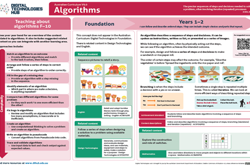
Algorithms: F-10 infographic
This series of three infographics provide an explanation of ‘Algorithms’ with relevant examples for each Year band and ‘I can’ statements.
-
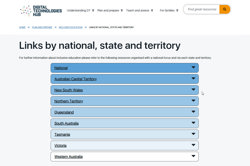
Inclusive education: Links by national, state and territory
For further information about inclusive education please refer to the following resources organised with a national focus and via each state and territory.
-
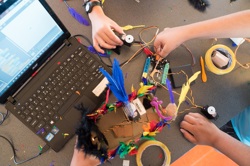
Universal design for learning
Universal design for learning is designing learning spaces to be accessible and usable by everyone without the need for adaptation.
-

Disability categories
The Nationally Consistent Collection of Data on School Students with Disability (NCCD) identifies four broad categories of disability: physical, cognitive, sensory, and social/emotional.
-
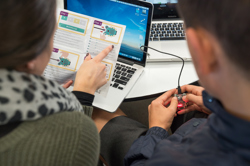
Inclusive education principles
Inclusive education is making sure that education is accessible to every student.
-
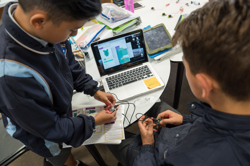
Inclusive education
Information and support organised in broad categories of disability: physical, cognitive, sensory, and social/emotional.
